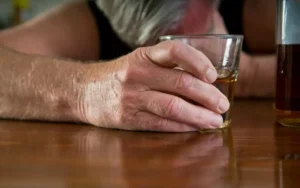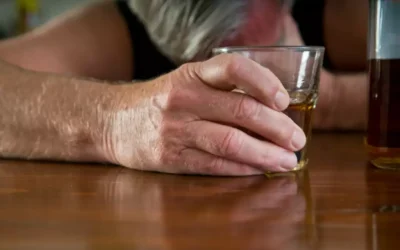
NSAIDs can also cause you to bleed internally and alcohol carries this risk as well. Calls to our general hotline may be answered by California Rehab Campus, Day Light Recovery Florida, Banyan Treatment Center, US Addiction Services, Recovery Helpline, or other treatment providers. Alcohol and medicines https://ecosoberhouse.com/ can interact harmfully even if they are not taken at the same time.
- Prescription stimulants like Adderall enhance the effect of certain neurotransmitters that heighten alertness and focus.
- People with epilepsy rely on anti-epileptic drugs (AEDs) to keep their seizures in check.
- Supplements that are marketed as mood enhancers may also interact dangerously with alcohol.
- Along with stimulant prescriptions drugs, mixing alcohol with cocaine is another danger that people who abuse drugs have to worry about.
Mixing Alcohol and Prescription Drugs
- When taken in excess, a person may experience nausea, vomiting, confusion, paranoia, and stomach pain.
- Gateway Foundation has more than 50 years of experience in addiction treatment, and our innovations in addiction medicine have helped more than one million people graduate our programs.
- If you have a problem with alcohol, you might have a problem with other substances too – or it could happen in the future.
- Our programs focus on building skills to recognize triggers, manage stress, and develop a personalized recovery plan for long-term sobriety.
- Medications prescribed to lower cholesterol levels (known as statins) can cause flushing, itching, stomach bleeding, and liver damage.
The effects of mixing alcohol with strong stimulants are unpredictable at best and fatal at worst. According to the National Institute on Drug Abuse (NIDA), mixing cocaine and alcohol is very common. Antihistamines like diphenhydramine (Benadryl) can be used to treat allergies as well as insomnia, and don’t require a physician’s prescription. Alcohol’s depressant effect on the central nervous system (CNS) increases the sedative effect of antihistamines to a potentially dangerous level.
Hypertension Medications
Many people know that mixing alcohol with illicit drugs or prescription drugs is risky, but drinking after taking over-the-counter medicines or supplements can also cause health problems. The side effects of mixing alcohol with other substances aren’t limited to coordination loss or drowsiness. Taking over-the-counter pain medication such as acetaminophen or NSAIDs sounds harmless, but can be dangerous, especially when mixed with alcohol. Acetaminophen and alcohol can cause acute (quick onset) and serious liver damage.
- However, both of these levels are considered to be high risk when taken outside prescription parameters.
- Ecstasy, also known as MDMA, can conceal the effects of alcohol when individuals consume both drugs.
- While there are some herbal supplements used in the treatment of alcohol addiction, there are others that increase the sedative impact on those who combine them with drinking.
- Also known as polysubstance use, co-occurring drug use disorder (DUD) and alcohol use disorder (AUD) affected 12.6 million American adults in 2007.
- The following list is not all-inclusive, but it does provide some common medications and drugs, the common side effects, and possible problems that can be caused by mixing them with alcohol.
- Combining the substances may cause changes in blood pressure and heart rates, unconsciousness, and accidents.
What are the short-term effects of mixing drugs and alcohol?
- The list presented here does not include all the medicines that may interact harmfully with alcohol.
- Several ingredients in cold and allergy medications can interact dangerously with alcohol.
- Mixing prescription drugs such as antidepressants, sleep aids, or antipsychotics with alcohol can reduce medication effectiveness or cause harmful side effects.
- Short-term effects include impaired judgment, drowsiness, nausea, dizziness, and an increased risk of accidents or overdose.
- For example, women can experience the effects of mixing alcohol and medications more severely than men because of differences in metabolism.
- There are numerous drugs on the market that are prescribed for the control of high blood pressure, including Lopressor (HCT hydrochlorothiazide), Norvasc (amlodipine besylate), and Accupril (quinapril).
Much like antihistamines, cold and allergy meds are going to have to wait in line while your body metabolizes alcohol. What this means is your body might discard some of the medication before it gets a chance for the liver to do its job with it. As well as being less effective, this means that your liver is working overtime and can cause serious liver damage if you take cold medication the same evening you have a wild night with friends. The following list is not all-inclusive, but it does provide some common medications and drugs, the common side effects, and possible problems that can be caused by mixing them with alcohol. Depending on mixing alcohol and drugs causes an effect called what is mixed with alcohol, there are several possible outcomes. In some cases, the alcohol will render the medication useless and the benefits of the medication will be lost.

Environmental Health

The second type is called pharmacodynamic interactions, where alcohol enhances the effects of drugs, particularly in the central nervous system (CNS). If people abuse both alcohol and drugs, they are engaging in alcohol and other drug (AOD) use. People with comorbidities may be dependent on both alcohol and drugs or have two or more psychological Substance abuse disorders. If you are mixing alcohol with other drugs and are worried about the effects, help is available. Search our rehab directory or contact a treatment provider to explore your treatment options.
Public Health
Unintentional polysubstance use occurs when a person takes drugs that have been mixed or cut with other substances, like fentanyl, without their knowledge. Yes, polysubstance use increases the likelihood of developing dependency on multiple substances, making recovery more complex. At Greater Boston Addiction Centers, we offer compassionate, evidence-based treatment tailored to your unique needs. Whether you’re seeking alcohol rehab, drug treatment in Boston, or comprehensive substance abuse treatment, we’re here to support your journey to recovery. Polysubstance abuse accelerates the damage caused by each substance, leading to long-term physical, mental, and emotional consequences. Some medications—including many popular painkillers and cough, cold, and allergy remedies—contain more than one ingredient that can react with alcohol.

Drinking even a small amount of alcohol while taking an antibiotic called Flagyl (metronidazole) can cause a severe reaction, making you extremely sick with nausea and vomiting. You will want to avoid alcohol for three days before you start and after you stop Flagyl. It’s important that you don’t mix alcohol with any of the following medications. The label on your medication may not specifically warn against consuming alcohol while you are taking the drug, so it’s important not to assume that the absence of a warning means it is safe to mix the two. The material is not a substitute for qualified medical diagnoses, treatment, or advice. It should not be used to replace the suggestions of your personal physician or other health care professionals.
